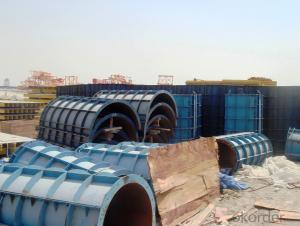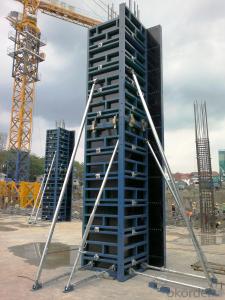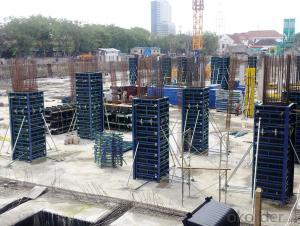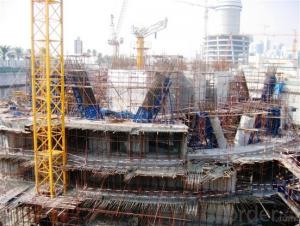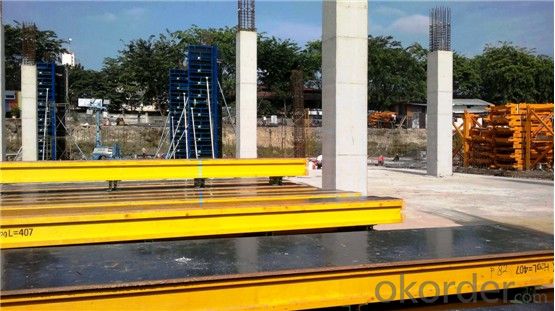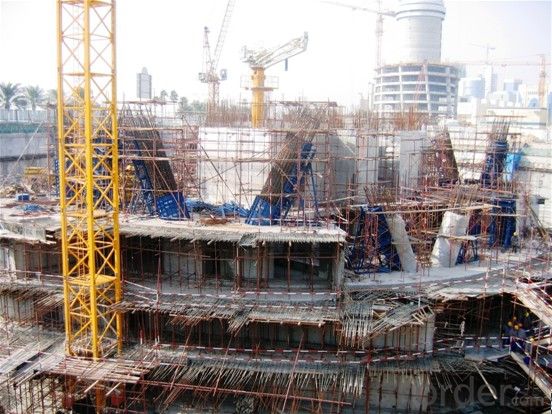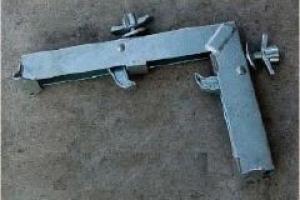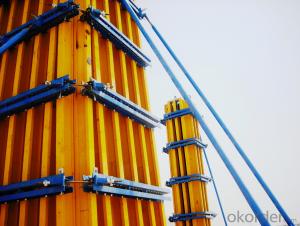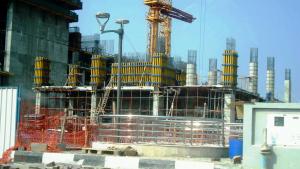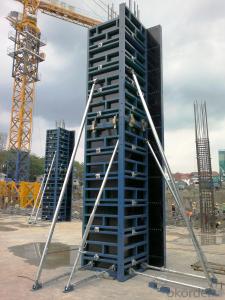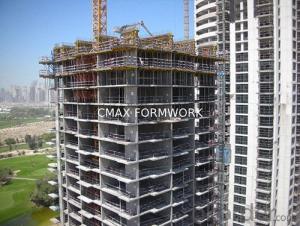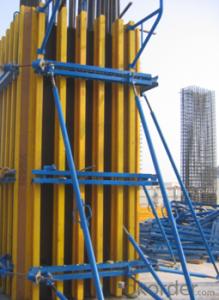Adjustable H20 Timber Beam Formwork for Slant Concrete Column Formwork
- Loading Port:
- Tianjin
- Payment Terms:
- TT or LC
- Min Order Qty:
- 50 kg
- Supply Capability:
- 1000 kg/month
OKorder Service Pledge
OKorder Financial Service
You Might Also Like
1. Structure of Steel Column Formwork
SC system is a kind of formwork for pouring circular column; it is composed of two pieces of steel formwork, props, connectors, etc.
2. Main Features of Steel Column Formwork
1. No assembling for formwork, easy operation with formed formwork.
2. High stiffness guarantees perfect concrete shape;
3. The formwork can be moving as a whole unit, fast and repeatedly turnover is available.
3. Steel Column Formwork Images
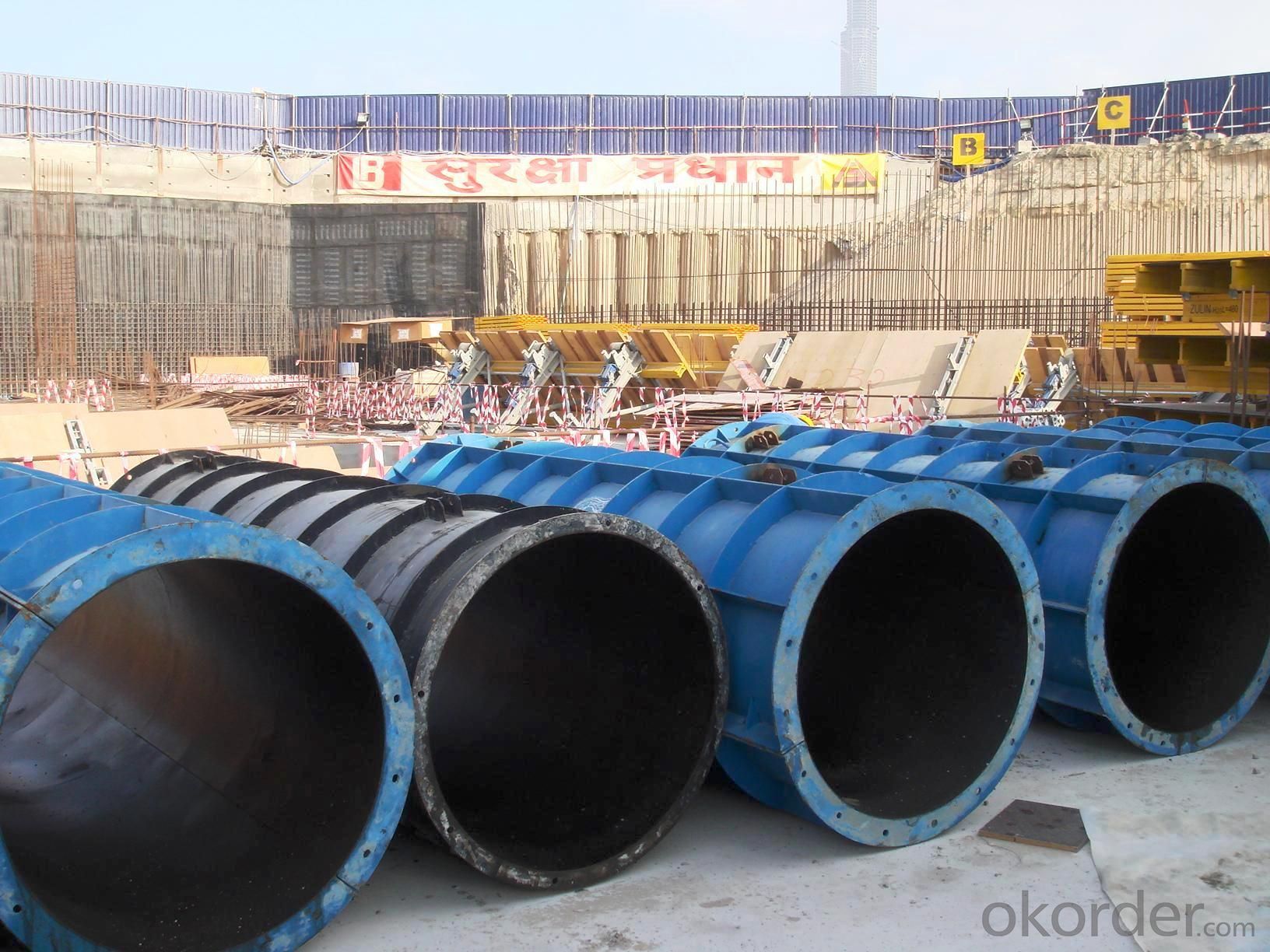
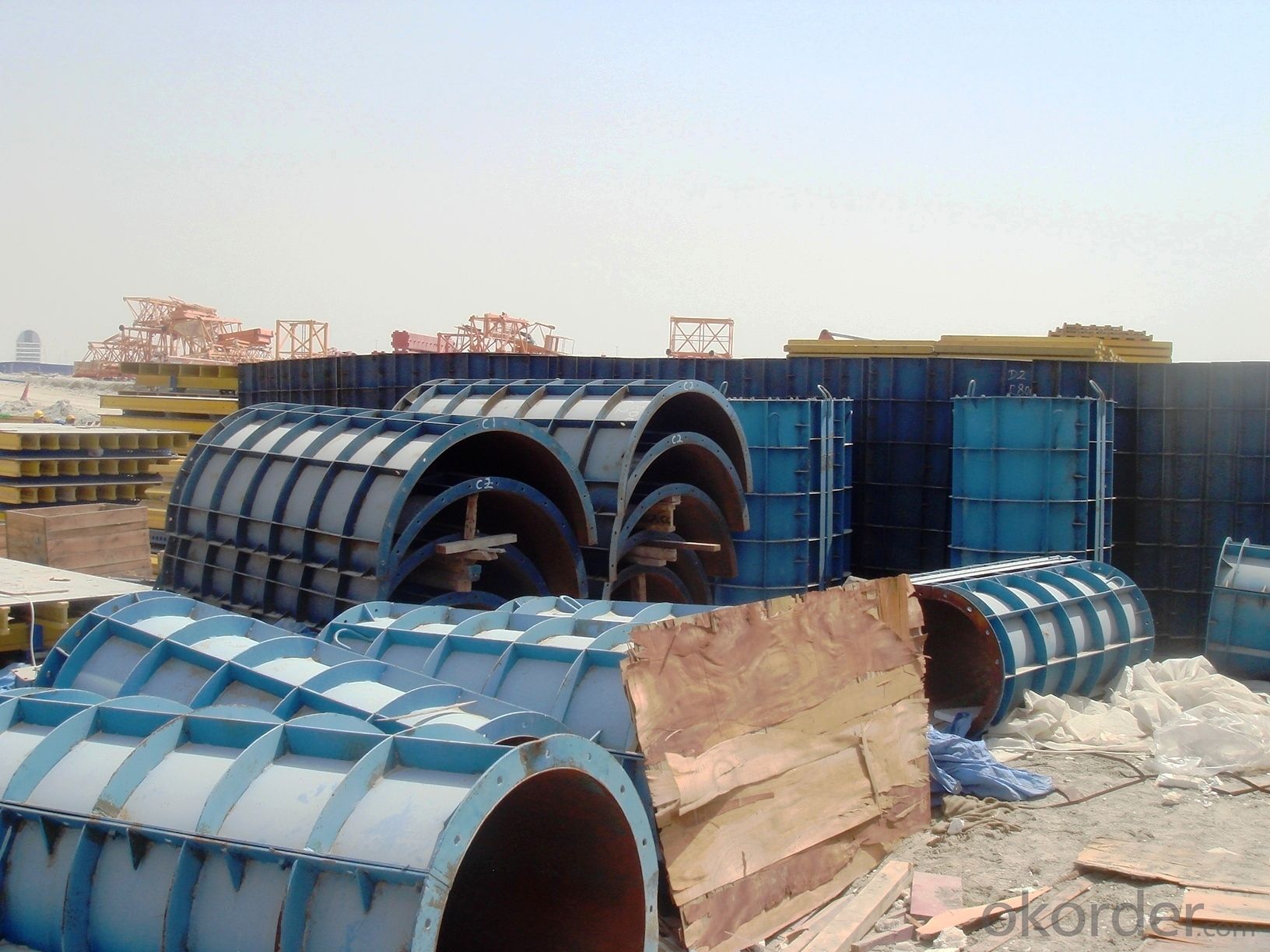
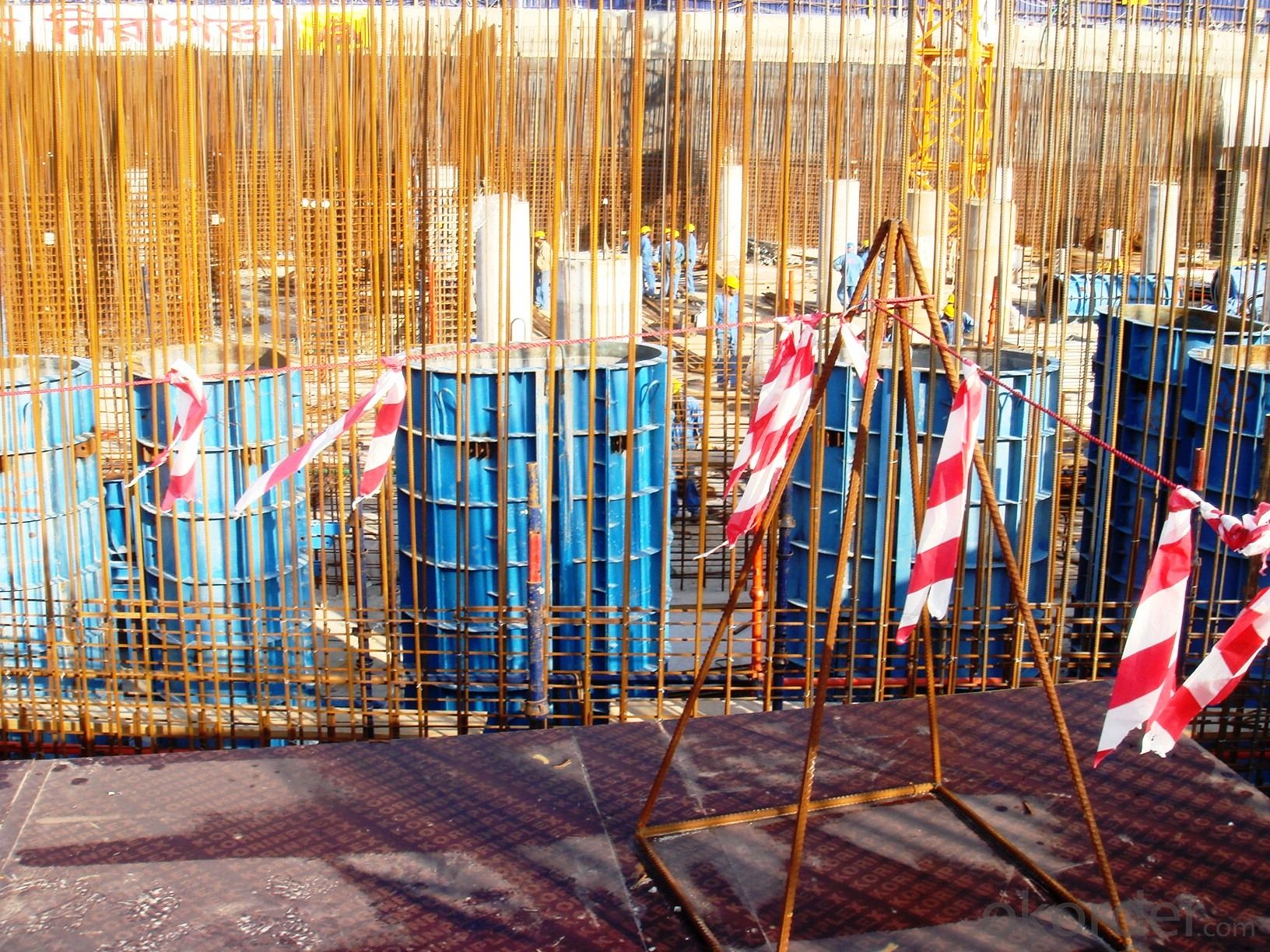
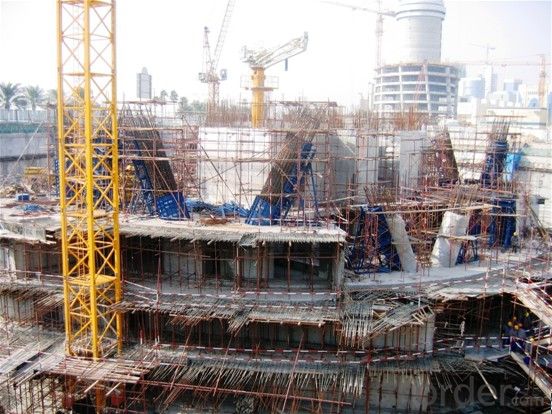
4. STEEL Column Formwork Specification
-As a standardized system, it is flexible to assemble , wood batten can be filled to satisfy the need f of non-standard size.
-The adjustable steel clamp is convenient to use, and can hold tightly.
-There is a prizing part designed in the corner, which can help to position and remove formwork easily.
-The formwork series are a complete system with a full set of accessories, and can be set up flexibly according to project demand.
5. FAQ of Steel Column Formwork
1) What can we do for you?
.We can ensure the quality of the vinyl banner and avoid extra expenses for customers.
.We can provide you the professional design team.
.We can provide fashionable and newest styles for you.
.We can design the artwork for you.
. Please feel free to customize.
2) What promises can be done by us?
. If interested in Steel Column Formwork, please feel free to write us for any QUOTE.
. If printing required, please advise asap because the whole set need much more time to complete.
. Please DO check goods when courier knocks your door and contact us asap if any issue.
3) What about of our after-sale service?
. Response will be carried out in 24hours after receiving any complain or request.
. Aluminum-Frame Formwork cost can be refund after order is confirmed.
. If the products are not based on the requirements, there will be the relevant compensations made for you.
- Q: How does steel formwork affect the structural integrity of a building?
- Steel formwork is a construction technique that uses steel molds to create the desired shape and structure of concrete elements in a building. It plays a crucial role in the construction process and affects the structural integrity of a building in several ways. Firstly, steel formwork provides a strong and rigid support system for the wet concrete during the pouring and setting process. Its robustness ensures that the concrete remains in the desired shape and prevents any deformation or collapse. This is particularly important for structural elements such as beams, columns, and walls, as it ensures their proper alignment and stability. Additionally, steel formwork allows for precise and accurate construction. The molds can be fabricated with great precision, resulting in accurate dimensions and shapes for the concrete elements. This precision is essential for maintaining the structural integrity of the building, as any slight deviation or misalignment can compromise the overall strength and stability of the structure. Moreover, steel formwork provides a smooth surface finish to the concrete. This smoothness is not only aesthetically pleasing but also contributes to the structural integrity of the building. A smooth surface reduces the likelihood of cracks, voids, or air pockets in the concrete, which can weaken its strength and durability. Furthermore, steel formwork offers durability and reusability. Unlike other types of formwork, such as wood or plastic, steel formwork can withstand multiple uses without losing its structural integrity. This reusability not only saves construction costs but also ensures consistency in the quality of the concrete elements throughout the building. Lastly, steel formwork enhances the overall structural stability of the building. The use of steel molds provides a rigid framework that distributes the loads evenly and efficiently. This distribution of loads minimizes the risk of localized stress concentrations, thereby improving the structural integrity of the building and increasing its overall resistance to external forces such as wind, earthquakes, or heavy loads. In conclusion, steel formwork significantly impacts the structural integrity of a building in a positive way. It provides a strong support system, ensures precision and accuracy, offers a smooth surface finish, provides durability and reusability, and enhances overall structural stability. All these factors contribute to the strength, stability, and longevity of the building, making steel formwork an essential component in modern construction practices.
- Q: Can steel formwork be used for curved or irregular shapes?
- Yes, steel formwork can be used for curved or irregular shapes. Its flexibility allows it to be easily shaped and adjusted to create the desired form.
- Q: How do steel formwork systems ensure proper alignment and stability?
- Steel formwork systems ensure proper alignment and stability by their robust and rigid structure. The steel panels and frames are designed to interlock securely, providing a tight fit that prevents any movement or shifting during the concrete pouring process. Additionally, the steel formwork systems are equipped with adjustable braces and supports, allowing for precise alignment and leveling. This ensures that the concrete structure being formed maintains its correct shape and dimensions, ultimately resulting in a stable and durable final product.
- Q: What are the advantages and disadvantages of the application of the steel formwork and the plywood formwork in the construction?
- According to the area of the project, such as the number of layers to determine the type of templateFrom the perspective of saving wood, the state generally encourage the use of steel formwork
- Q: How does steel formwork handle concrete setting time and curing temperature?
- Steel formwork handles concrete setting time and curing temperature effectively. Steel is a good conductor of heat, allowing it to quickly absorb and dissipate heat from the concrete, which helps in controlling the concrete's setting time and curing temperature. The use of steel formwork also provides stability and strength, ensuring that the concrete maintains its shape and integrity during the setting and curing process. Additionally, steel formwork is durable and can withstand the high temperatures generated during curing, making it suitable for various construction projects.
- Q: How does steel formwork handle concrete bleeding?
- Steel formwork is an excellent choice for handling concrete bleeding. Concrete bleeding refers to the process where water in the concrete mixture rises to the surface, resulting in the separation of the water from the solid components. Steel formwork is designed to have a smooth and non-porous surface, which helps to prevent excessive bleeding and the loss of water from the concrete mixture. The tight joints and connections of steel formwork also minimize the chances of water seepage, ensuring that the concrete retains its desired water content. Additionally, steel formwork provides excellent support and stability to the concrete during the pouring and setting process. This prevents the formation of voids or gaps within the concrete, reducing the risk of excessive bleeding. The rigidity of steel formwork also helps to maintain the shape and structure of the concrete, preventing any deformation or cracking that may occur due to bleeding. Moreover, steel formwork allows for easy and efficient removal of excess water from the concrete surface. The smooth and non-absorbent nature of steel formwork facilitates the use of various techniques, such as squeegeeing or vacuuming, to remove the excess water, reducing the bleeding effect. In summary, steel formwork handles concrete bleeding effectively by providing a smooth and non-porous surface, minimizing water seepage, ensuring stability and support to the concrete, and allowing for efficient removal of excess water.
- Q: What are the common design considerations for steel formwork in heritage buildings?
- When it comes to the design of steel formwork in heritage buildings, there are various factors that must be taken into account. These considerations aim to maintain the historical and architectural significance of the building while ensuring efficient construction processes. Some of the main design considerations for steel formwork in heritage buildings include the following: 1. Preservation of Historical Value: The primary objective when designing steel formwork for heritage buildings is to preserve and protect the historical elements of the structure. The design must respect the building's original architectural features, materials, and construction methods, while also ensuring that the formwork adequately supports the weight of the concrete during the construction process. 2. Structural Stability: The steel formwork design should provide sufficient support and stability to the structure during the pouring and curing of the concrete. It is crucial to consider the load-bearing capacity of the formwork and ensure that it can withstand the weight of the concrete, reinforcing bars, and construction equipment without causing any damage to the heritage building. 3. Flexibility and Reusability: Since heritage buildings often require restoration or repairs over time, it is essential to design the steel formwork in a way that allows for easy disassembly and reuse. This consideration ensures that the formwork can be removed without causing any harm to the building and can be used again for future construction projects. 4. Aesthetic Considerations: In heritage buildings, maintaining the original architectural aesthetics is of utmost importance. The design of the steel formwork should take into account the visual impact it will have on the structure. This may involve incorporating decorative elements or finishes that match the existing architectural style or using formwork that can be concealed or removed once the concrete is set. 5. Accessibility and Safety: The design of the steel formwork should consider the safety requirements for both construction workers and the general public. It should ensure safe access to different areas of the building during construction and minimize any potential risks or hazards associated with formwork installation and removal. 6. Environmental Considerations: Sustainable design practices should be considered when designing steel formwork for heritage buildings. This may involve using recycled or low-impact materials, minimizing waste generation, and implementing energy-efficient construction techniques. In conclusion, the design considerations for steel formwork in heritage buildings revolve around the preservation of historical value, structural stability, flexibility, aesthetics, accessibility, safety, and environmental sustainability. By addressing these factors, architects and engineers can ensure that the construction process respects the heritage value of the building while meeting modern construction standards.
- Q: Can steel formwork be used for underground construction projects?
- Yes, steel formwork can be used for underground construction projects. Steel is a durable and strong material that can withstand the pressure and conditions found in underground structures. It provides stability and support during the construction process and can be easily reused or recycled after the project is completed.
- Q: What are the considerations when designing steel formwork for dams?
- When designing steel formwork for dams, several key considerations need to be taken into account. Firstly, the structural stability and strength of the formwork is of utmost importance. Dams are large structures that exert significant forces, so the formwork needs to be able to withstand these forces without any deformation or failure. This requires careful analysis and design of the formwork system, including the selection of appropriate steel grades, sizes, and reinforcement. Another important consideration is the water pressure that the formwork will be subjected to during the construction and operation of the dam. The formwork needs to be watertight to prevent any leakage or seepage, as this can compromise the stability and integrity of the dam. Special attention should be given to the joints and connections of the formwork to ensure a tight and secure seal. Durability is another factor that needs to be considered when designing steel formwork for dams. Dams have a long design life, often spanning several decades, so the formwork needs to be able to withstand prolonged exposure to various environmental conditions, such as temperature changes, moisture, and chemical exposure. The formwork should be protected against corrosion, either through the use of corrosion-resistant steel or by applying protective coatings. The ease of assembly and disassembly is also an important consideration. Dams are complex structures that require a large number of formwork elements to be assembled and aligned accurately. The formwork system should be designed in a way that allows for easy and efficient installation and removal, minimizing the time and effort required for construction. Lastly, cost considerations play a significant role in the design of steel formwork for dams. The formwork system needs to be cost-effective and efficient, maximizing the use of materials and minimizing waste. The design should also take into account the availability and cost of steel, as well as the availability of skilled labor for fabrication and installation. Overall, the considerations when designing steel formwork for dams include structural stability, watertightness, durability, ease of assembly, and cost-effectiveness. By carefully addressing these factors, engineers can ensure the successful construction and long-term performance of the dam.
- Q: What are the different types of steel used for formwork construction?
- There are several types of steel commonly used for formwork construction, including mild steel, high-strength low-alloy (HSLA) steel, and reinforced steel. These different types of steel offer varying levels of strength and durability, allowing for the construction of formwork that can withstand the pressures and forces exerted during the concrete pouring process.
Send your message to us
Adjustable H20 Timber Beam Formwork for Slant Concrete Column Formwork
- Loading Port:
- Tianjin
- Payment Terms:
- TT or LC
- Min Order Qty:
- 50 kg
- Supply Capability:
- 1000 kg/month
OKorder Service Pledge
OKorder Financial Service
Similar products
Hot products
Hot Searches
Related keywords

